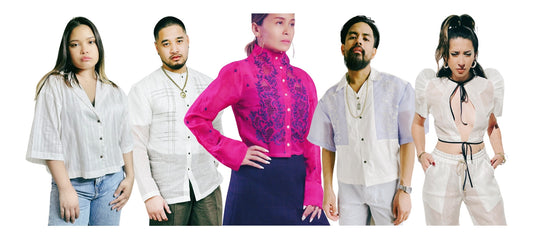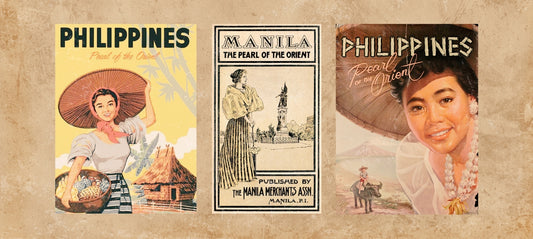Behold our beautiful new prints digitally painted by our in-house artist, Chesleigh Nofiel (previously Alaga At Sining)! For this Spring floral, I wanted to have Chesleigh create something giant and minimal, if that makes sense. I wanted a floral that was literally larger than life in a field of colour, so that it feels special. As always, Chesleigh serves.
Chesleigh Nofiel's Artist Statements
Waling-waling + Alibangbang
This design plays on appropriating rhythm, reduplication of words, and floriography, the language of Filipino flora. In linguistics, it is a morphological process in which the root or stem of a word or even the whole word is repeated exactly or with a slight change. In Filipino language, we reduplicate words like: Araw-araw, Gabi-gabi, Alaala, Halakhak, Kakabakaba, etc.
Featuring the indigenous and endemic Waling-waling (Vanda sanderiana) orchid which means "moth in flight," given by the ethnic tribes of its home in Mindanao; and the native Alibangbang (Bauhinia malabrica) tree which translates to "butterfly" in Ilongo, derived from the butterfly shape of the leaves common to many Bauhinia species.
The Waling-waling is considered to be one of the most beautiful orchids in the world. Standing out for its spectacular form, color and size, it has played a major role in orchid hybridization, which makes it a recognized and acclaimed orchid. It’s national and international popularity, ornamental value and role it played to place the Philippines in the consciousness of the old and New World.
Also known as Orchid Tree, the gorgeous Alibangbang tree has many benefits not only for insects, but also the community! It’s bark is used to make ropes, flowers are edible, and the young leaves have a citrusy and sour taste that are used as a souring agent for sinigang and similar dishes in Philippine cuisine.

Bayabas + Banaba
Featuring the alliterative native trees, Bayabas (Psidium guajava) and Banaba (Lagerstroemia speciosa).
Bayabas is one of the most popular therapeutic crops in the Philippines that was introduced by the Spaniards during the Manila-Acapulco Galleon Trade (1565–1815). In the backyards of Filipino homes, this plant is commonly seen and grown because of its many uses as fruit and as traditional remedy to treat various ailments. Traditionally, the Bayabas is used as an antiseptic and anti-inflammatory for skin conditions, wounds, bacterial infections, and diarrhea; it can also be used as a mouthwash to treat decay and gum infection.
The Banaba, also known as the Crepe Myrtle, because of its 6 "crinkled" petals is native to South and Southeast Asia. In the Philippines, it is appreciated for both its ornamental and pharmacological value. Its leaves, bark, dried fruit are used as herbal remedy for lowering the blood sugar, kidney ailments, and the bark is used for treating diarrhea. Aside from its traditional medicinal properties, the Banaba is also prized for its timber, known to have beautiful patterns, and its wide and dense root system anchors the soil very well and helps control erosion.








